Review:
A Study in Scarlet, by Arthur Conan Doyle
| Series: |
Sherlock Holmes #1 |
| Publisher: |
AmazonClassics |
| Copyright: |
1887 |
| Printing: |
February 2018 |
| ISBN: |
1-5039-5525-7 |
| Format: |
Kindle |
| Pages: |
159 |
A Study in Scarlet is the short mystery novel (probably a novella,
although I didn't count words) that introduced the world to Sherlock
Holmes.
I'm going to invoke the 100-year-rule and discuss the plot of this book
rather freely on the grounds that even someone who (like me prior to a few
days ago) has not yet read it is probably not that invested in avoiding
all spoilers. If you do want to remain entirely unspoiled, exercise
caution before reading on.
I had somehow managed to avoid ever reading anything by Arthur Conan
Doyle, not even a short story. I therefore couldn't be sure that some of
the assertions I was making in my review of
A Study in Honor were correct. Since
A Study in Scarlet
would be quick to read, I decided on a whim to do a bit of research and
grab a free copy of the first Holmes novel. Holmes is such a part of
English-speaking culture that I thought I had a pretty good idea of what
to expect.
This was largely true, but cultural osmosis had somehow not prepared me
for the surprise Mormons.
A Study in Scarlet establishes the basic parameters of a Holmes
story: Dr. James Watson as narrator, the apartment he shares with Holmes
at 221B Baker Street, the Baker Street Irregulars, Holmes's competition
with police detectives, and his penchant for making leaps of logical
deduction from subtle clues. The story opens with Watson meeting Holmes,
agreeing to split the rent of a flat, and being baffled by the apparent
randomness of Holmes's fields of study before Holmes reveals he's a
consulting detective. The first case is a murder: a man is found dead in
an abandoned house, without a mark on him although there are blood
splatters on the walls and the word "RACHE" written in blood.
Since my only prior exposure to Holmes was from cultural references and a
few TV adaptations, there were a few things that surprised me. One is
that Holmes is voluble and animated rather than aloof. Doyle is clearly
going for passionate eccentric rather than calculating mastermind.
Another is that he is intentionally and unabashedly ignorant on any topic
not related to solving mysteries.
My surprise reached a climax, however, when I found incidentally that
he was ignorant of the Copernican Theory and of the composition of the
Solar System. That any civilized human being in this nineteenth
century should not be aware that the earth travelled round the sun
appeared to be to me such an extraordinary fact that I could hardly
realize it.
"You appear to be astonished," he said, smiling at my expression of
surprise. "Now that I do know it I shall do my best to forget it."
"To forget it!"
"You see," he explained, "I consider that a man's brain originally is
like a little empty attic, and you have to stock it with such
furniture as you chose. A fool takes in all the lumber of every sort
that he comes across, so that the knowledge which might be useful to
him gets crowded out, or at best is jumbled up with a lot of other
things so that he has a difficulty in laying his hands upon it. Now
the skilful workman is very careful indeed as to what he takes into
his brain-attic. He will have nothing but the tools which may help
him in doing his work, but of these he has a large assortment, and all
in the most perfect order. It is a mistake to think that that little
room has elastic walls and can distend to any extent. Depend upon it
there comes a time when for every addition of knowledge you forget
something that you knew before. It is of the highest importance,
therefore, not to have useless facts elbowing out the useful ones."
This is directly contrary to my expectation that the best way to make
leaps of deduction is to know something about a huge range of topics so
that one can draw unexpected connections, particularly given the
puzzle-box construction and odd details so beloved in classic mysteries.
I'm now curious if Doyle stuck with this conception, and if there were any
later mysteries that involved astronomy.
Speaking of classic mysteries,
A Study in Scarlet isn't quite one,
although one can see the shape of the genre to come. Doyle does not "play
fair" by the rules that have not yet been invented. Holmes at most points
knows considerably more than the reader, including bits of evidence that
are not described until Holmes describes them and research that Holmes
does off-camera and only reveals when he wants to be dramatic. This is
not the sort of story where the reader is encouraged to try to figure out
the mystery before the detective.
Rather, what Doyle seems to be aiming for, and what Watson attempts
(unsuccessfully) as the reader surrogate, is slightly different: once
Holmes makes one of his grand assertions, the reader is encouraged to
guess what Holmes might have done to arrive at that conclusion. Doyle
seems to want the reader to guess technique rather than outcome, while
providing only vague clues in general descriptions of Holmes's behavior at
a crime scene.
The structure of this story is quite odd. The first part is roughly what
you would expect: first-person narration from Watson, supposedly taken
from his journals but not at all in the style of a journal and explicitly
written for an audience. Part one concludes with Holmes capturing and
dramatically announcing the name of the killer, who the reader has never
heard of before. Part two then opens with... a western?
In the central portion of the great North American Continent there
lies an arid and repulsive desert, which for many a long year served
as a barrier against the advance of civilization. From the Sierra
Nevada to Nebraska, and from the Yellowstone River in the north to the
Colorado upon the south, is a region of desolation and silence. Nor
is Nature always in one mood throughout the grim district. It
comprises snow-capped and lofty mountains, and dark and gloomy
valleys. There are swift-flowing rivers which dash through jagged
ca ons; and there are enormous plains, which in winter are white with
snow, and in summer are grey with the saline alkali dust. They all
preserve, however, the common characteristics of barrenness,
inhospitality, and misery.
First, I have issues with the geography. That region contains some of the
most beautiful areas on earth, and while a lot of that region is arid,
describing it primarily as a repulsive desert is a bit much. Doyle's
boundaries and distances are also confusing: the Yellowstone is a
northeast-flowing river with its source in Wyoming, so the area between it
and the Colorado does not extend to the Sierra Nevadas (or even to Utah),
and it's not entirely clear to me that he realizes Nevada exists.
This is probably what it's like for people who live anywhere else in the
world when US authors write about their country.
But second, there's no Holmes, no Watson, and not even the pretense of a
transition from the detective novel that we were just reading. Doyle just
launches into a random western with an omniscient narrator. It features a
lean, grizzled man and an adorable child that he adopts and raises into a
beautiful free spirit, who then falls in love with a wild gold-rush
adventurer. This was written about 15 years before the first critically
recognized western novel, so I can't blame Doyle for all the cliches here,
but to a modern reader all of these characters are straight from central
casting.
Well, except for the villains, who are the Mormons. By that, I don't mean
that the villains are Mormon. I mean Brigham Young is the on-page
villain, plotting against the hero to force his adopted daughter into a
Mormon harem (to use the word that Doyle uses repeatedly) and ruling Salt
Lake City with an iron hand, border guards with passwords (?!), and secret
police. This part of the book was
wild. I was laughing out-loud
at the sheer malevolent absurdity of the thirty-day countdown to marriage,
which I doubt was the intended effect.
We do eventually learn that this is the backstory of the murder, but we
don't return to Watson and Holmes for multiple chapters. Which leads me
to the other thing that surprised me: Doyle lays out this backstory, but
then never has his characters comment directly on the morality of it, only
the spectacle. Holmes cares only for the intellectual challenge (and for
who gets credit), and Doyle sets things up so that the reader need not
concern themselves with aftermath, punishment, or anything of that sort.
I probably shouldn't have been surprised this does fit with the Holmes
stereotype but I'm used to modern fiction where there is usually at
least some effort to pass judgment on the events of the story. Doyle
draws very clear villains, but is utterly silent on whether the murder is
justified.
Given its status in the history of literature, I'm not sorry to have read
this book, but I didn't particularly enjoy it. It is very much of its
time: everyone's moral character is linked directly to their physical
appearance, and Doyle uses the occasional racial stereotype without a
second thought. Prevailing writing styles have changed, so the prose
feels long-winded and breathless. The rivalry between Holmes and the
police detectives is tedious and annoying. I also find it hard to read
novels from before the general absorption of techniques of emotional
realism and interiority into all genres. The characters in
A Study
in Scarlet felt more like cartoon characters than fully-realized human
beings.
I have no strong opinion about the objective merits of this book in the
context of its time other than to note that the sudden inserted western
felt very weird. My understanding is that this is not considered one of
the better Holmes stories, and Holmes gets some deeper characterization
later on. Maybe I'll try another of Doyle's works someday, but for now my
curiosity has been sated.
Followed by
The Sign of the Four.
Rating: 4 out of 10
 I recently became a maintainer of/committer to
I recently became a maintainer of/committer to  A short status update what happened last month. Work in progress is marked as WiP:
GNOME Calls
A short status update what happened last month. Work in progress is marked as WiP:
GNOME Calls
 In light of the recent
In light of the recent  One of the knitting projects I m working on is a big bottom-up
triangular shawl in less-than-fingering weight yarn (NM 1/15): it feels
like a cloud should by all rights feel, and I have good expectations out
of it, but it s taking forever and a day.
And then one day last spring I started thinking in the general direction
of top-down shawls, and decided I couldn t wait until I had finished the
first one to see if I could design one.
For my first attempt I used an odd ball of 50% wool 50% plastic I had in
my stash and worked it on 12 mm tree trunks, and I quickly made
something between a scarf and a shawl that got some use during the
summer thunderstorms when temperatures got a bit lower, but not really
cold. I was happy with the shape, not with the exact position of the
increases, but I had ideas for improvements, so I just had to try
another time.
Digging through the stash I found four balls of Drops Alpaca in two
shades of grey: I had bought it with the intent to test its durability
in somewhat more demanding situations (such as gloves or even socks),
but then the LYS
One of the knitting projects I m working on is a big bottom-up
triangular shawl in less-than-fingering weight yarn (NM 1/15): it feels
like a cloud should by all rights feel, and I have good expectations out
of it, but it s taking forever and a day.
And then one day last spring I started thinking in the general direction
of top-down shawls, and decided I couldn t wait until I had finished the
first one to see if I could design one.
For my first attempt I used an odd ball of 50% wool 50% plastic I had in
my stash and worked it on 12 mm tree trunks, and I quickly made
something between a scarf and a shawl that got some use during the
summer thunderstorms when temperatures got a bit lower, but not really
cold. I was happy with the shape, not with the exact position of the
increases, but I had ideas for improvements, so I just had to try
another time.
Digging through the stash I found four balls of Drops Alpaca in two
shades of grey: I had bought it with the intent to test its durability
in somewhat more demanding situations (such as gloves or even socks),
but then the LYS
 I m glad that I did it, however, as it s still soft and warm, but now
also looks nicer.
The pattern is of course online as #FreeSoftWear on
I m glad that I did it, however, as it s still soft and warm, but now
also looks nicer.
The pattern is of course online as #FreeSoftWear on  By the influencers on the famous proprietary video platform
By the influencers on the famous proprietary video platform Anyway, my brain suddenly decided that I needed a red wool dress, fitted
enough to give some bust support. I had already made a
Anyway, my brain suddenly decided that I needed a red wool dress, fitted
enough to give some bust support. I had already made a  I knew that I didn t have enough fabric to add a flounce to the hem, as
in the cotton dress, but then I remembered that some time ago I fell for
a piece of fringed trim in black, white and red. I did a quick check
that the red wasn t clashing (it wasn t) and I knew I had a plan for the
hem decoration.
Then I spent a week finishing other projects, and the more I thought
about this dress, the more I was tempted to have spiral lacing at the
front rather than buttons, as a nod to the kirtle inspiration.
It may end up be a bit of a hassle, but if it is too much I can always
add a hidden zipper on a side seam, and only have to undo a bit of the
lacing around the neckhole to wear the dress.
Finally, I could start working on the dress: I cut all of the main
pieces, and since the seam lines were quite curved I marked them with
tailor s tacks, which I don t exactly enjoy doing or removing, but are
the only method that was guaranteed to survive while manipulating this
fabric (and not leave traces afterwards).
I knew that I didn t have enough fabric to add a flounce to the hem, as
in the cotton dress, but then I remembered that some time ago I fell for
a piece of fringed trim in black, white and red. I did a quick check
that the red wasn t clashing (it wasn t) and I knew I had a plan for the
hem decoration.
Then I spent a week finishing other projects, and the more I thought
about this dress, the more I was tempted to have spiral lacing at the
front rather than buttons, as a nod to the kirtle inspiration.
It may end up be a bit of a hassle, but if it is too much I can always
add a hidden zipper on a side seam, and only have to undo a bit of the
lacing around the neckhole to wear the dress.
Finally, I could start working on the dress: I cut all of the main
pieces, and since the seam lines were quite curved I marked them with
tailor s tacks, which I don t exactly enjoy doing or removing, but are
the only method that was guaranteed to survive while manipulating this
fabric (and not leave traces afterwards).
 While cutting the front pieces I accidentally cut the high neck line
instead of the one I had used on the cotton dress: I decided to go for
it also on the back pieces and decide later whether I wanted to lower
it.
Since this is a modern dress, with no historical accuracy at all, and I
have access to a serger, I decided to use some dark blue cotton voile
I ve had in my stash for quite some time, cut into bias strip, to bind
the raw edges before sewing. This works significantly better than bought
bias tape, which is a bit too stiff for this.
While cutting the front pieces I accidentally cut the high neck line
instead of the one I had used on the cotton dress: I decided to go for
it also on the back pieces and decide later whether I wanted to lower
it.
Since this is a modern dress, with no historical accuracy at all, and I
have access to a serger, I decided to use some dark blue cotton voile
I ve had in my stash for quite some time, cut into bias strip, to bind
the raw edges before sewing. This works significantly better than bought
bias tape, which is a bit too stiff for this.
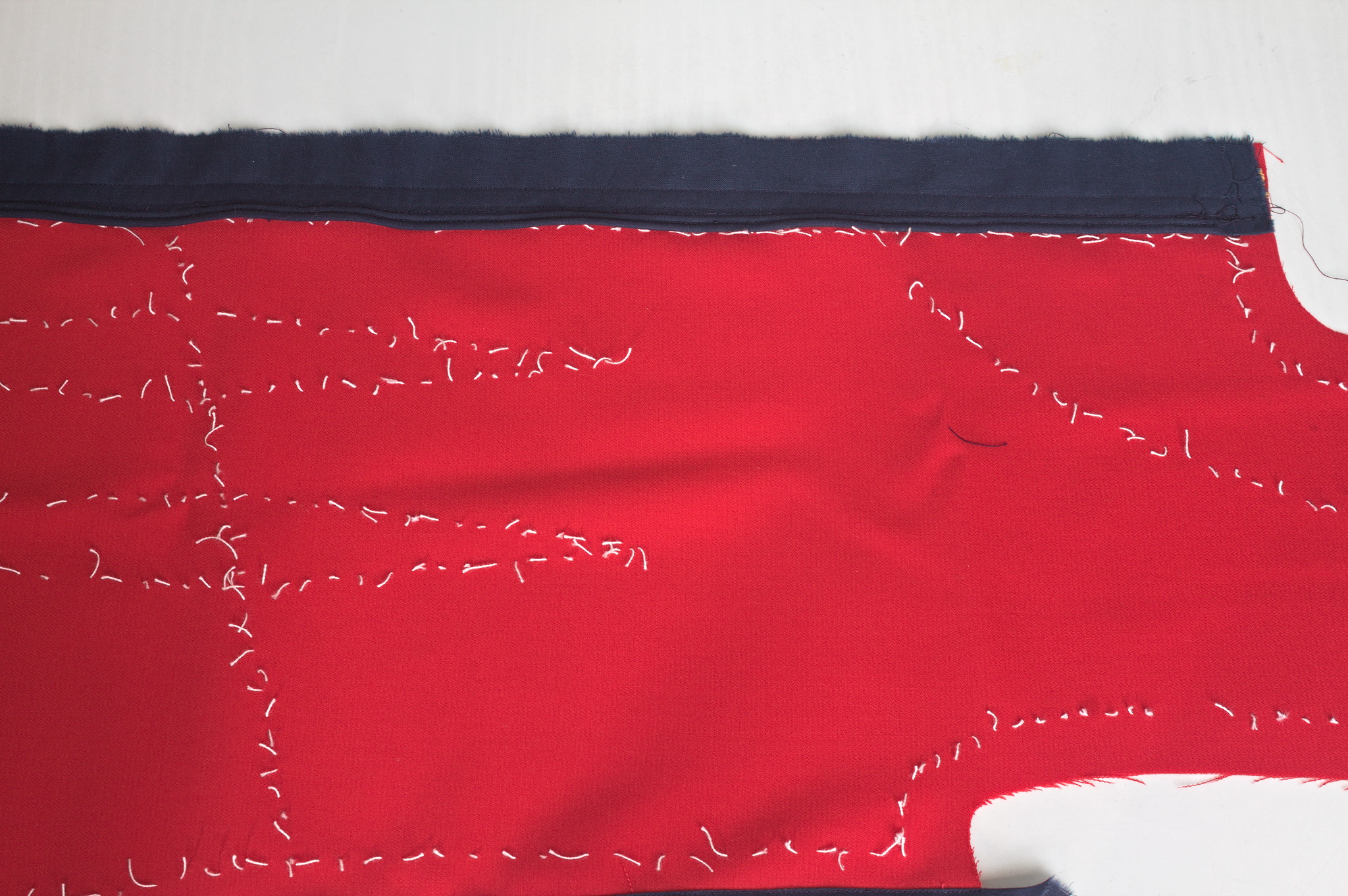 For the front opening, I ve decided to reinforce the areas where the
lacing holes will be with cotton: I ve used some other navy blue cotton,
also from the stash, and added two lines of cording to stiffen the front
edge.
So I ve cut the front in two pieces rather than on the fold, sewn the
reinforcements to the sewing allowances in such a way that the corded
edge was aligned with the center front and then sewn the bottom of the
front seam from just before the end of the reinforcements to the hem.
For the front opening, I ve decided to reinforce the areas where the
lacing holes will be with cotton: I ve used some other navy blue cotton,
also from the stash, and added two lines of cording to stiffen the front
edge.
So I ve cut the front in two pieces rather than on the fold, sewn the
reinforcements to the sewing allowances in such a way that the corded
edge was aligned with the center front and then sewn the bottom of the
front seam from just before the end of the reinforcements to the hem.
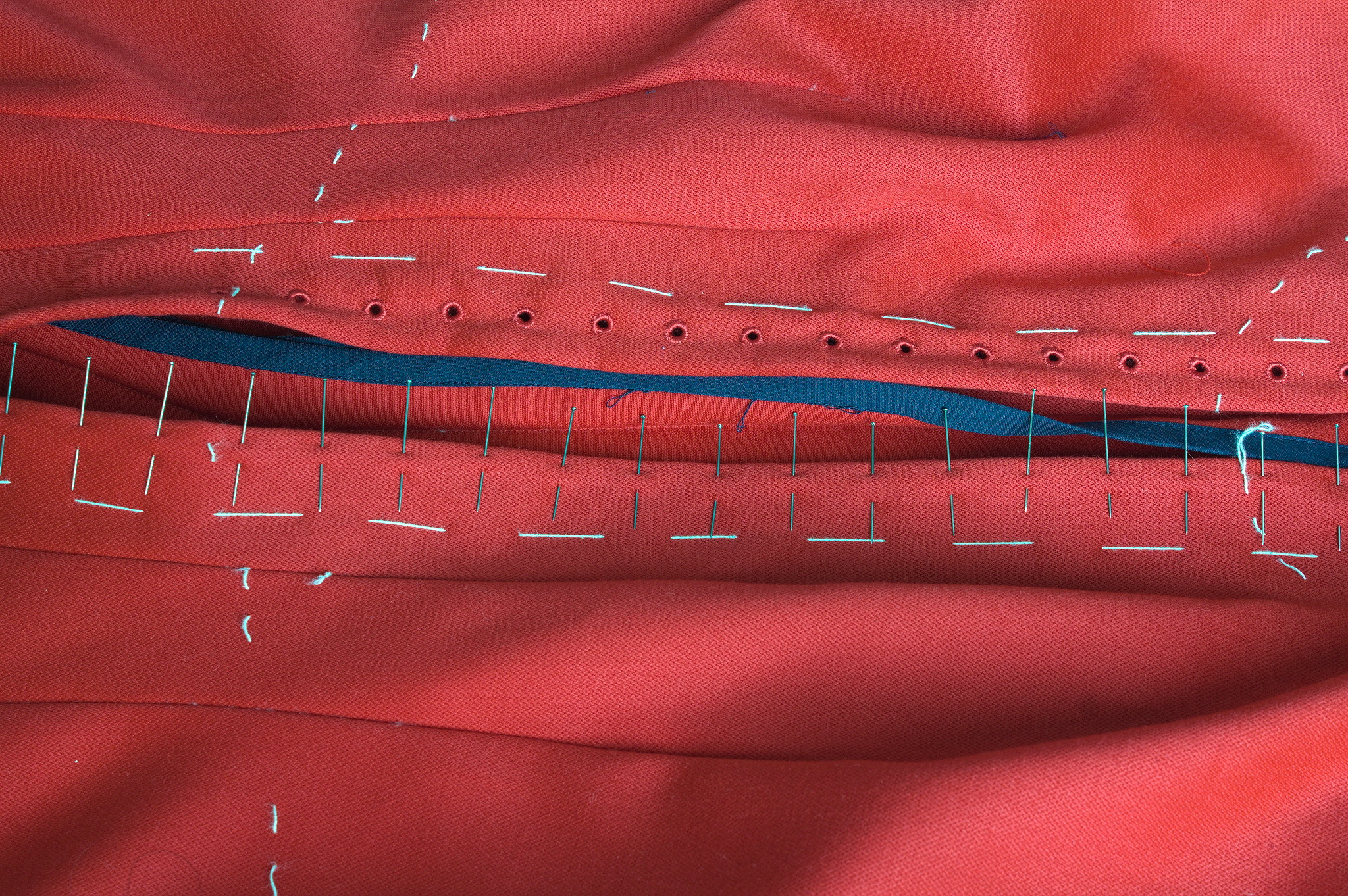 The allowances are then folded back, and then they are kept in place
by the worked lacing holes. The cotton was pinked, while for the wool I
used the selvedge of the fabric and there was no need for any finishing.
Behind the opening I ve added a modesty placket: I ve cut a strip of red
wool, a strip of cotton, folded the edge of the strip of cotton to the
center, added cording to the long sides, pressed the allowances of the
wool towards the wrong side, and then handstitched the cotton to the
wool, wrong sides facing. This was finally handstitched to one side of
the sewing allowance of the center front.
I ve also decided to add real pockets, rather than just slits, and for
some reason I decided to add them by hand after I had sewn the dress, so
I ve left opening in the side back seams, where the slits were in the
cotton dress. I ve also already worn the dress, but haven t added the
pockets yet, as I m still debating about their shape. This will be fixed
in the near future.
Another thing that will have to be fixed is the trim situation: I like
the fringe at the bottom, and I had enough to also make a belt, but this
makes the top of the dress a bit empty. I can t use the same fringe
tape, as it is too wide, but it would be nice to have something smaller
that matches the patterned part. And I think I can make something
suitable with tablet weaving, but I m not sure on which materials to
use, so it will have to be on hold for a while, until I decide on the
supplies and have the time for making it.
Another improvement I d like to add are detached sleeves, both matching
(I should still have just enough fabric) and contrasting, but first I
want to learn more about real kirtle construction, and maybe start
making sleeves that would be suitable also for a real kirtle.
Meanwhile, I ve worn it on Christmas (over my 1700s menswear shirt with
big sleeves) and may wear it again tomorrow (if I bother to dress up to
spend New Year s Eve at home :D )
The allowances are then folded back, and then they are kept in place
by the worked lacing holes. The cotton was pinked, while for the wool I
used the selvedge of the fabric and there was no need for any finishing.
Behind the opening I ve added a modesty placket: I ve cut a strip of red
wool, a strip of cotton, folded the edge of the strip of cotton to the
center, added cording to the long sides, pressed the allowances of the
wool towards the wrong side, and then handstitched the cotton to the
wool, wrong sides facing. This was finally handstitched to one side of
the sewing allowance of the center front.
I ve also decided to add real pockets, rather than just slits, and for
some reason I decided to add them by hand after I had sewn the dress, so
I ve left opening in the side back seams, where the slits were in the
cotton dress. I ve also already worn the dress, but haven t added the
pockets yet, as I m still debating about their shape. This will be fixed
in the near future.
Another thing that will have to be fixed is the trim situation: I like
the fringe at the bottom, and I had enough to also make a belt, but this
makes the top of the dress a bit empty. I can t use the same fringe
tape, as it is too wide, but it would be nice to have something smaller
that matches the patterned part. And I think I can make something
suitable with tablet weaving, but I m not sure on which materials to
use, so it will have to be on hold for a while, until I decide on the
supplies and have the time for making it.
Another improvement I d like to add are detached sleeves, both matching
(I should still have just enough fabric) and contrasting, but first I
want to learn more about real kirtle construction, and maybe start
making sleeves that would be suitable also for a real kirtle.
Meanwhile, I ve worn it on Christmas (over my 1700s menswear shirt with
big sleeves) and may wear it again tomorrow (if I bother to dress up to
spend New Year s Eve at home :D )
 Read all parts of the series
Read all parts of the series
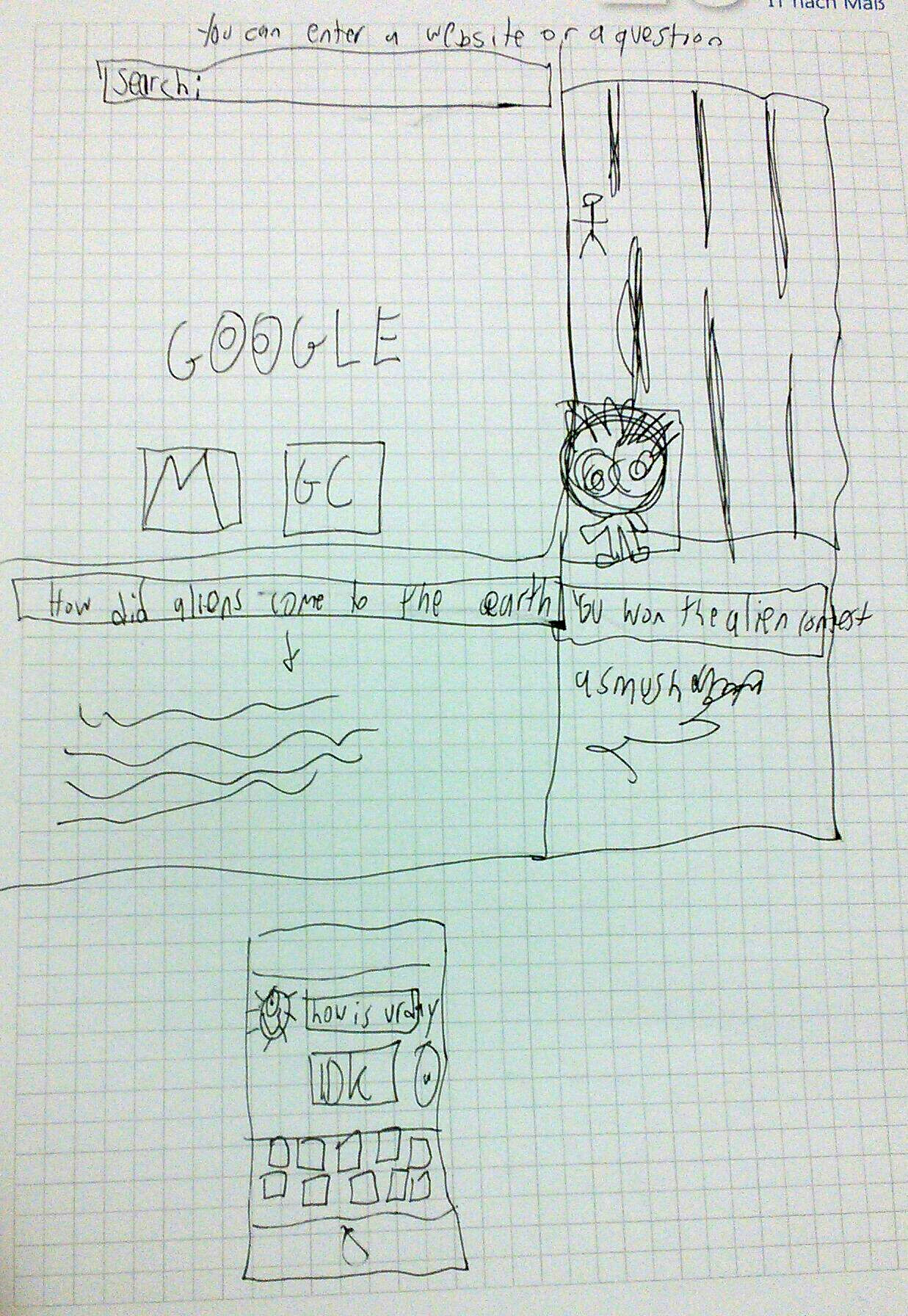 And here s what he explains about his drawing:
And here s what he explains about his drawing:
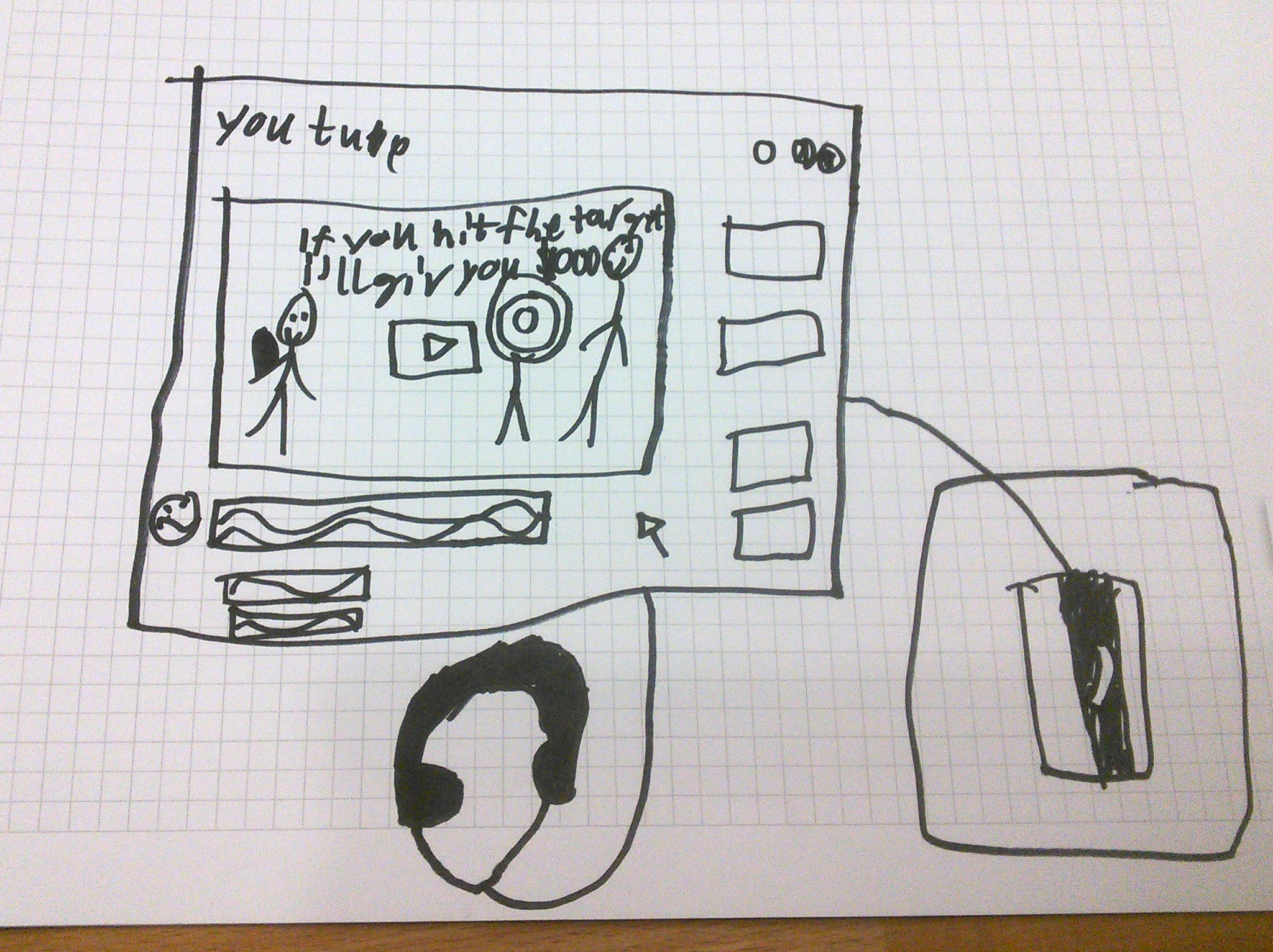 In their drawing we see a Youtube prank channel on a screen, an external
trackpad on the right (likely it s not a touch screen), and headphones.
Notice how there is no keyboard, or maybe it s folded away.
If you could ask a nice and friendly dragon anything you d like to
learn about the internet, what would it be?
In their drawing we see a Youtube prank channel on a screen, an external
trackpad on the right (likely it s not a touch screen), and headphones.
Notice how there is no keyboard, or maybe it s folded away.
If you could ask a nice and friendly dragon anything you d like to
learn about the internet, what would it be?
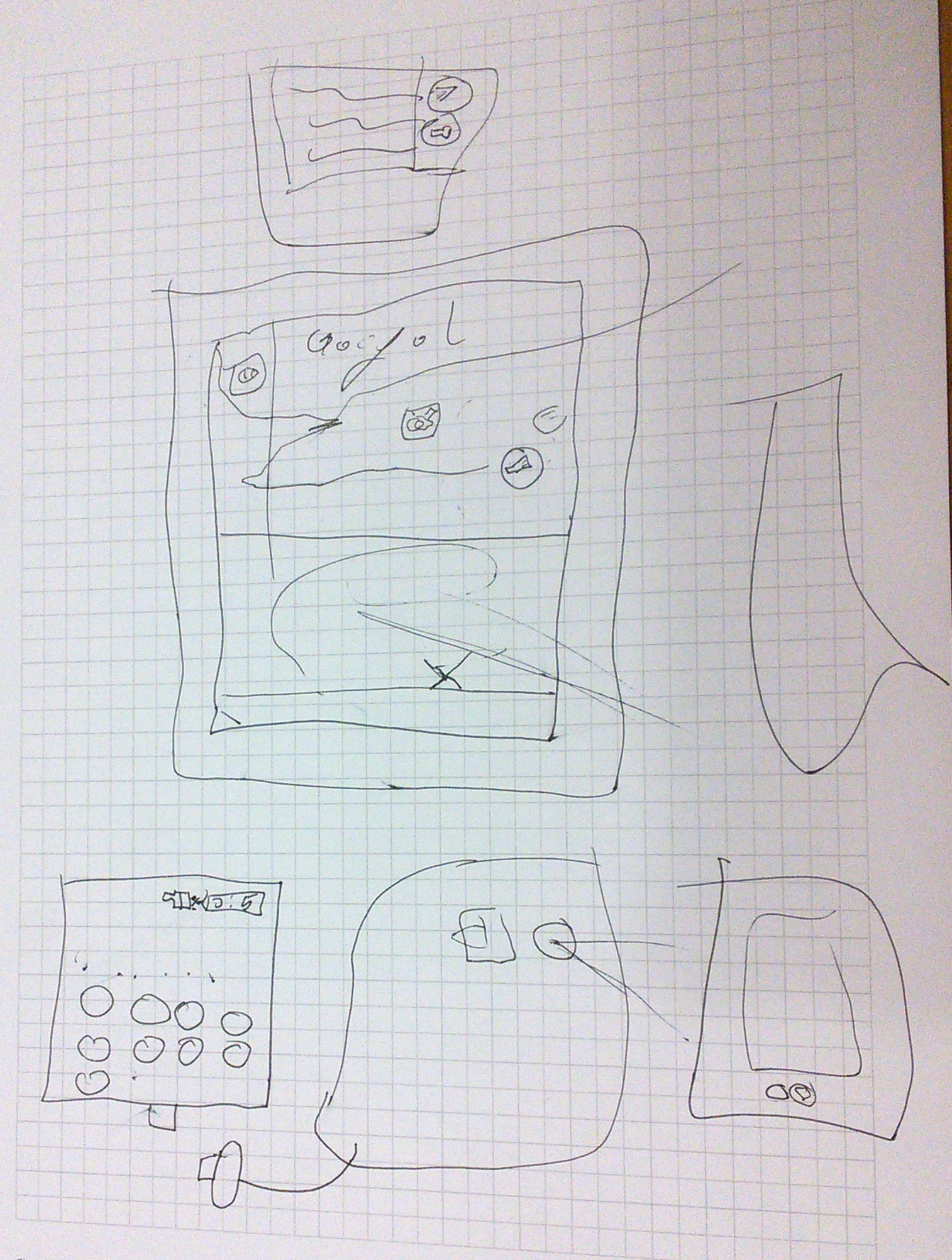 In her drawing, we see again Google - it s clearly everywhere - and also
the interfaces for calling and texting someone.
To explain what the internet is, besides the fact that one
can use it for calling and listening to music, she says:
In her drawing, we see again Google - it s clearly everywhere - and also
the interfaces for calling and texting someone.
To explain what the internet is, besides the fact that one
can use it for calling and listening to music, she says:
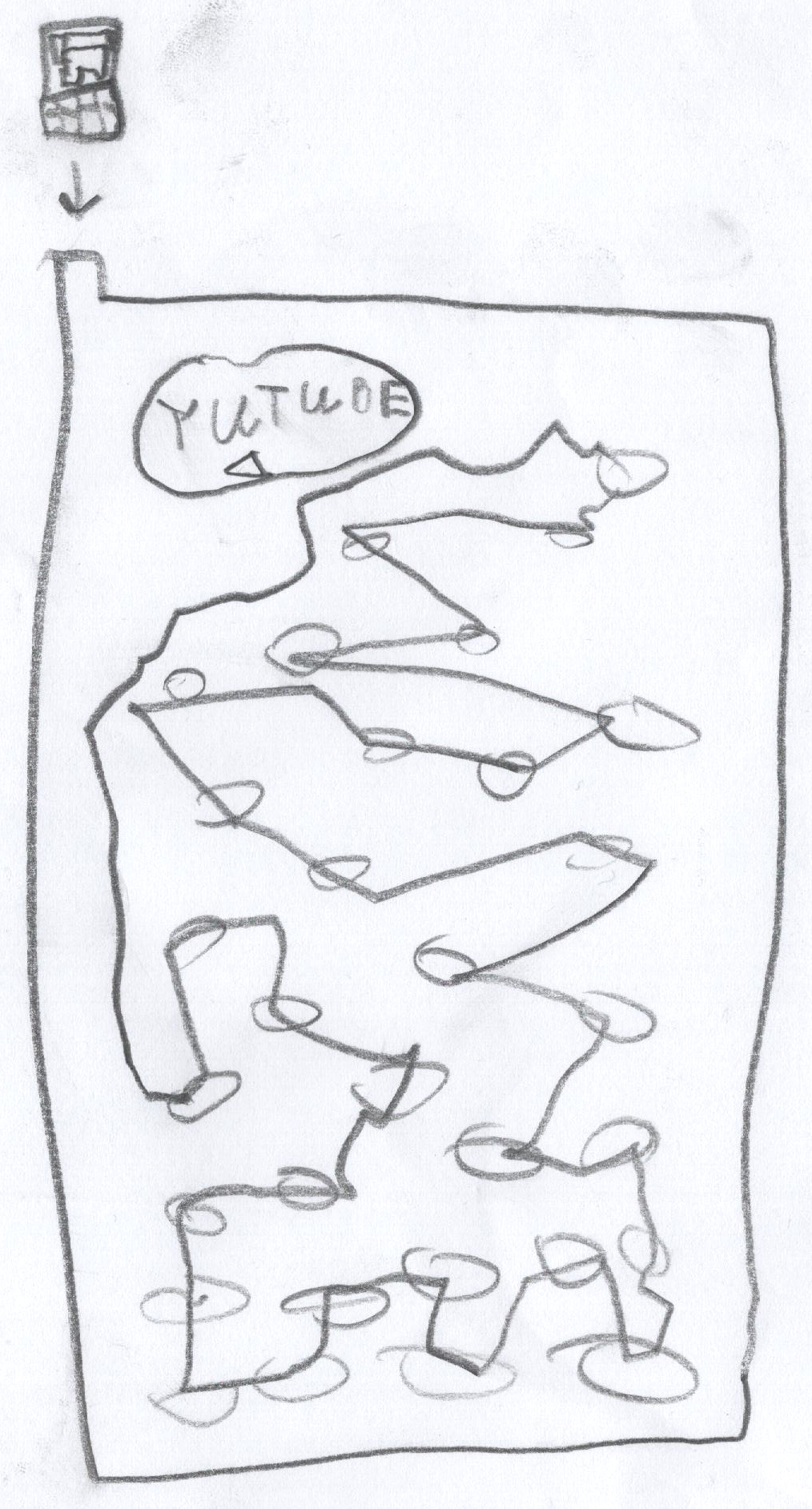 When I asked if he knew what actually happens between the device and a
website he visits, he put forth the hypothesis of the existence of some
kind of
When I asked if he knew what actually happens between the device and a
website he visits, he put forth the hypothesis of the existence of some
kind of

 Check it out
Check it out 
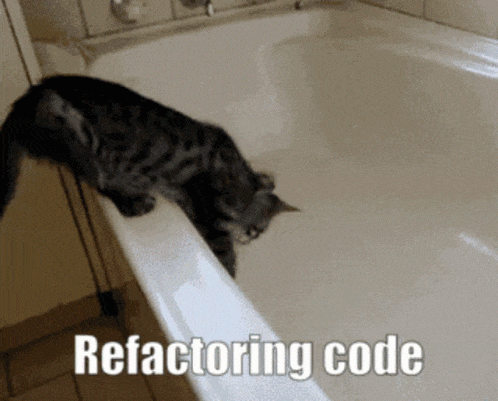

 Since some time I ve been thinking about making myself a top or a dress with a wide gathered neckline that can be work at different widths, including off-the-shoulders.
A few years ago I ve been gifted a cut of nice, thin white fabric with a print of lines and lozenges that isn t uniform along the fabric, but looks like it was designed for some specific garment, and it was waiting in my stash for a suitable pattern.
And a few days ago, during a Sunday lunch, there was an off-hand mention of a dress from the late 1970s which had an elastic in the neckline, so that it could be optionally worn off-the-shoulders.
And something snapped in place.
I had plans for that afternoon, but they were scrapped, and I started to draw, measure, cut rectangles of fabric, pin and measure again, cut more fabric.
Since some time I ve been thinking about making myself a top or a dress with a wide gathered neckline that can be work at different widths, including off-the-shoulders.
A few years ago I ve been gifted a cut of nice, thin white fabric with a print of lines and lozenges that isn t uniform along the fabric, but looks like it was designed for some specific garment, and it was waiting in my stash for a suitable pattern.
And a few days ago, during a Sunday lunch, there was an off-hand mention of a dress from the late 1970s which had an elastic in the neckline, so that it could be optionally worn off-the-shoulders.
And something snapped in place.
I had plans for that afternoon, but they were scrapped, and I started to draw, measure, cut rectangles of fabric, pin and measure again, cut more fabric.
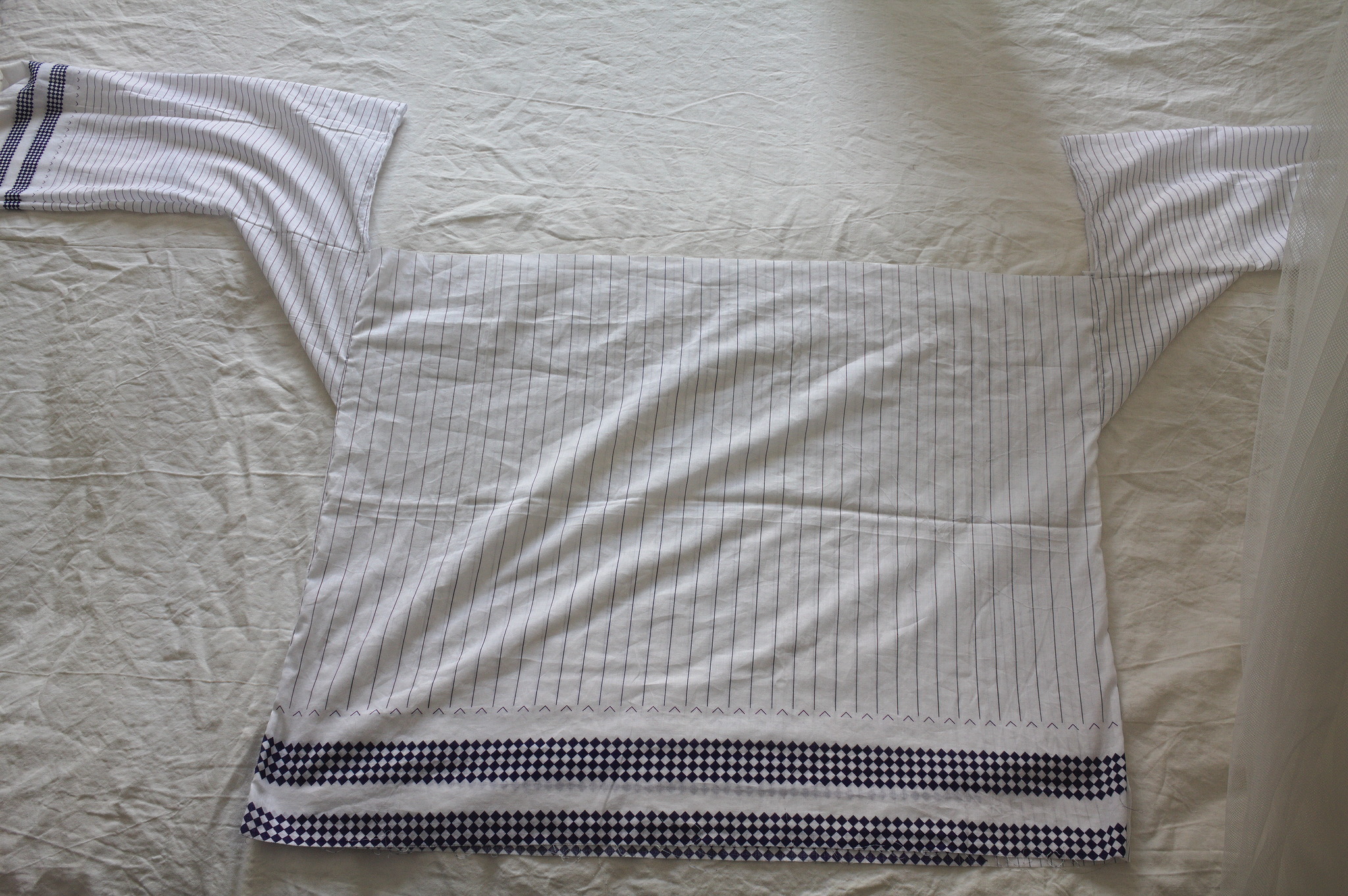
 The part of the fabric with large vertical stripes had two different widths: I could have made the back narrower, but I decided to just keep a strip with narrower lines to one side.
The fabric also didn t have a full second strip of lozenges, so I had to hem it halfway through it.
The part of the fabric with large vertical stripes had two different widths: I could have made the back narrower, but I decided to just keep a strip with narrower lines to one side.
The fabric also didn t have a full second strip of lozenges, so I had to hem it halfway through it.
 The casing for the elastic was pieced from various scraps, but at least I was able to match the lines on the center front and back, even if they are different. Not that it matters a lot, since it s all hidden in the gathering, but I would have known.
And since I was working on something definitely modern, even if made out of squares and rectangles, of course I decided to hand-sew everything, mostly to be able to use quite small sewing allowances, since the fabric was pretty thin.
In my stash I had a piece of swimsuit elastic that feels nice, looks nice and makes a knot that doesn t slip, so I used it. It s a perfect match, except for the neon yellow colour, which I do like, but maybe is a bit too high visibility? I will see if the haberdasher has the same elastic in dark blue, but right now this will do.
It was a quick project anyway: by the end of the working week the top was finished; I think that on a sewing machine it would be easy to make it in a day.
The casing for the elastic was pieced from various scraps, but at least I was able to match the lines on the center front and back, even if they are different. Not that it matters a lot, since it s all hidden in the gathering, but I would have known.
And since I was working on something definitely modern, even if made out of squares and rectangles, of course I decided to hand-sew everything, mostly to be able to use quite small sewing allowances, since the fabric was pretty thin.
In my stash I had a piece of swimsuit elastic that feels nice, looks nice and makes a knot that doesn t slip, so I used it. It s a perfect match, except for the neon yellow colour, which I do like, but maybe is a bit too high visibility? I will see if the haberdasher has the same elastic in dark blue, but right now this will do.
It was a quick project anyway: by the end of the working week the top was finished; I think that on a sewing machine it would be easy to make it in a day.
 And it can be worn off the shoulders! Which is something I will probably never do in public (and definitely not outdoors), but now if I wanted I could! :D
As usual, the pattern (for what pattern there is) and instructions are
And it can be worn off the shoulders! Which is something I will probably never do in public (and definitely not outdoors), but now if I wanted I could! :D
As usual, the pattern (for what pattern there is) and instructions are  A few days ago, I released a major update on
A few days ago, I released a major update on  It comes with a light- and dark theme that switches automatically based on the
browser setting, as well as fitting light- and dark syntax highlighting themes
for code blocks.
Improved
It comes with a light- and dark theme that switches automatically based on the
browser setting, as well as fitting light- and dark syntax highlighting themes
for code blocks.
Improved 
 Apart from it, the show also shows prejudice about caste and background. I wouldn t go much into it as it s worth seeing and experiencing.
Apart from it, the show also shows prejudice about caste and background. I wouldn t go much into it as it s worth seeing and experiencing.